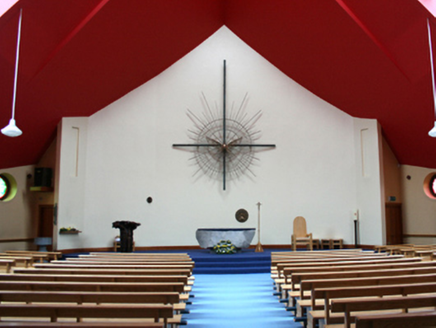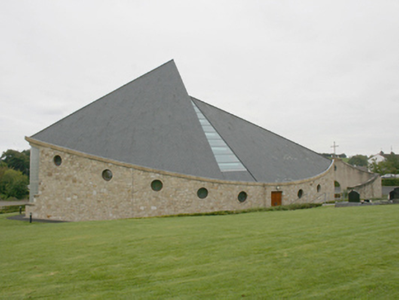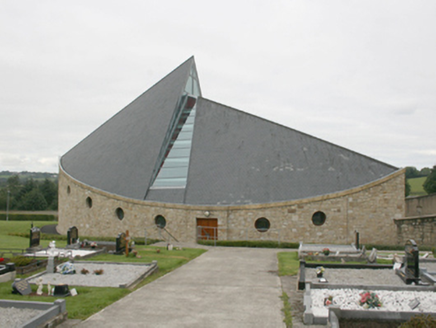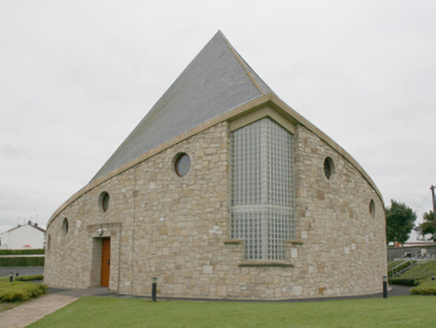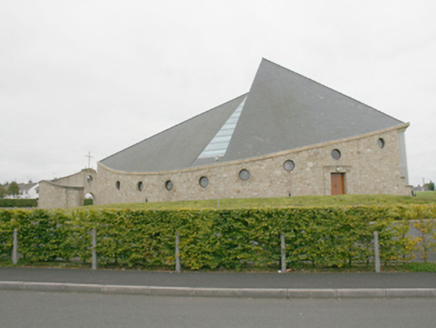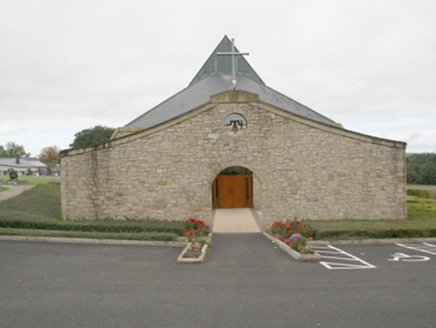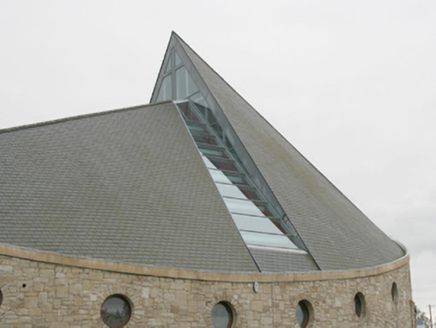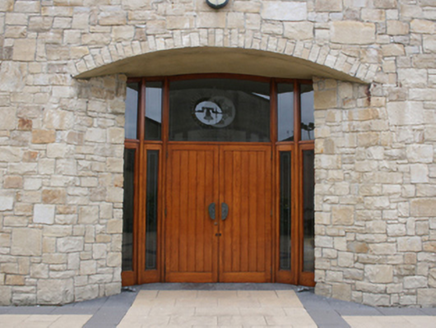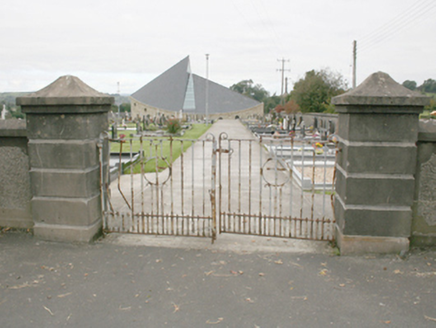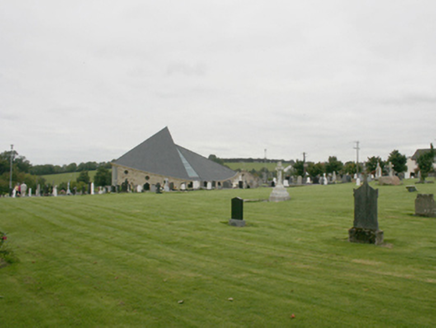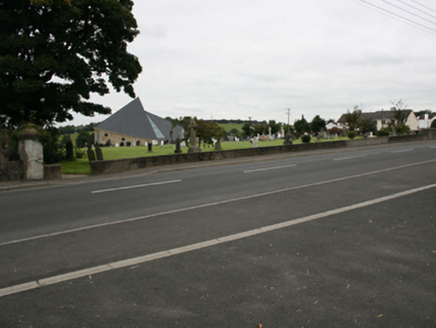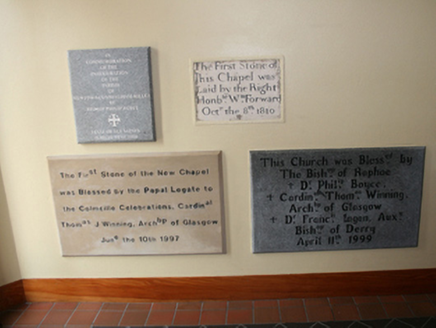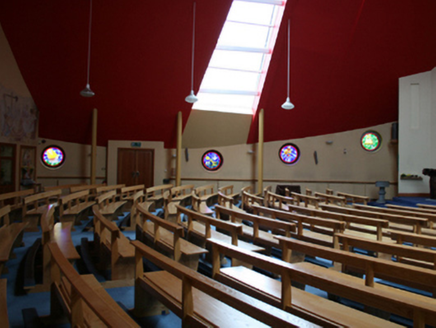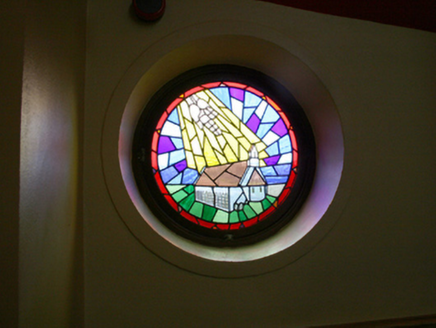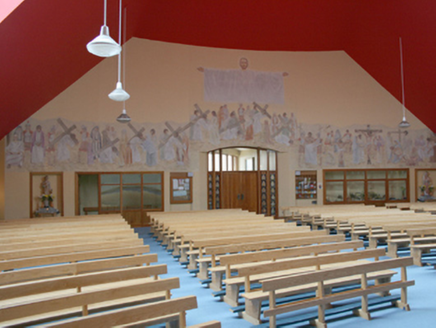Survey Data
Reg No
40824005
Rating
Regional
Categories of Special Interest
Architectural, Artistic, Social
Previous Name
St. Peter's Barque
Original Use
Church/chapel
In Use As
Church/chapel
Date
1995 - 2005
Coordinates
231368, 416778
Date Recorded
24/09/2008
Date Updated
--/--/--
Description
Freestanding double-height Catholic church, consecrated 1999, on a ship-based plan with courtyard area to the east created by section of freestanding stone-clad walling with central integral round-headed pedestrian archway with circular perforation over with bell metal bell, and surmounted by metal cross finial. Roof of varied steep pitches in Spanish slate, central rooflight stretching to apex at differing pitches on roof, clayware ridge tiles, lead guttering hidden behind smooth rendered band to eaves. Uncoursed squared Donegal sandstone (Mountcharles) walls with breakfront door surround to south. Oculus window openings to north and south elevations having squared stone-clad voussoirs and surrounds, leaded lights with scenes depicted in coloured glass; angled glass block elevation to west (prow) with sandstone sills. Segmental-headed door opening to the east elevation having recessed vertically sheeted double-doors with glazed sidelights, and with overlight having etched glazing over; shallow single-bay breakfronts to the south and north elevations having square-headed door openings with timber double-doors. Steeply-pitched ceiling to interior with tall tapering rooflight, rows of curved pews, carpeted floors and raised area to west end. Set back from road in own grounds to the centre of Newtowncunningham. Graveyard to site with collection of mainly twentieth-century gravemarkers and some nineteenth-century memorials. Site bounded to the south by roughcast rendered rubble stone boundary wall, hedging and fencing to other boundaries. Site of earlier church to the south-west, built 1861 and demolished c. 2000.
Appraisal
An interesting and visually-appealing Catholic church represents a recent addition to the built heritage of County Donegal. It is built in a post-modernist style with a striking profile, and is a landmark feature in the centre of Newtowncunningham. The irregular and inventive boat-shaped-plan is the result of liturgical changes brought about following the Second Vatican Council (1963-65), which allowed architects to move away from traditional church building forms and experiment with more unconventional designs. Its unusual design is apparently based on St. Peter’s Barque or Bark, the boat he used for fishing on the Sea of Galilee, and supposedly symbolises the Catholic faith sailing through both rough and calm seas into the third millennium. The use of angled slated roofs representing sails and oculus windows reminiscent of ship’s portholes all contribute to this architectural theme. The construction of the church is of technical interest, while the open and well-lit interior creates a reflective and contemplative space. The exterior is clad with Donegal sandstone, possibly from the Mountcharles quarries. It was built to designs by the Derry and Letterkenny based architectural practice MH Associates, and was consecrated on the 11th of April 1999. It was designed to accommodate 400 worshippers, and was built at an estimated cost of €1.2 million. The interior features a number of attractive coloured leaded glass windows, the work of local artists. The present church replaced an earlier Catholic church at Newtowncunningham, which was located adjacent to the south-west. This church was built in 1861 to designs by the English architect E. W. Godwin (1833-86), and was a low long structure of nine-bays with porches to the north and south elevations, and with a segmental-plan apse to the east. This church was demolished c. 2000 following the dedication of the modern church. Godwin’s chapel replaced an earlier hall-type church built in 1810 on land donated to the Church by William Forward of Castleforward\Castle Forward, a fact recorded on a plaque salvaged from this church that is now in the entrance hall of the modern edifice. This church is a distinctive addition to Newtowncunningham and makes a positive contribution by adding variety and texture to the village.
